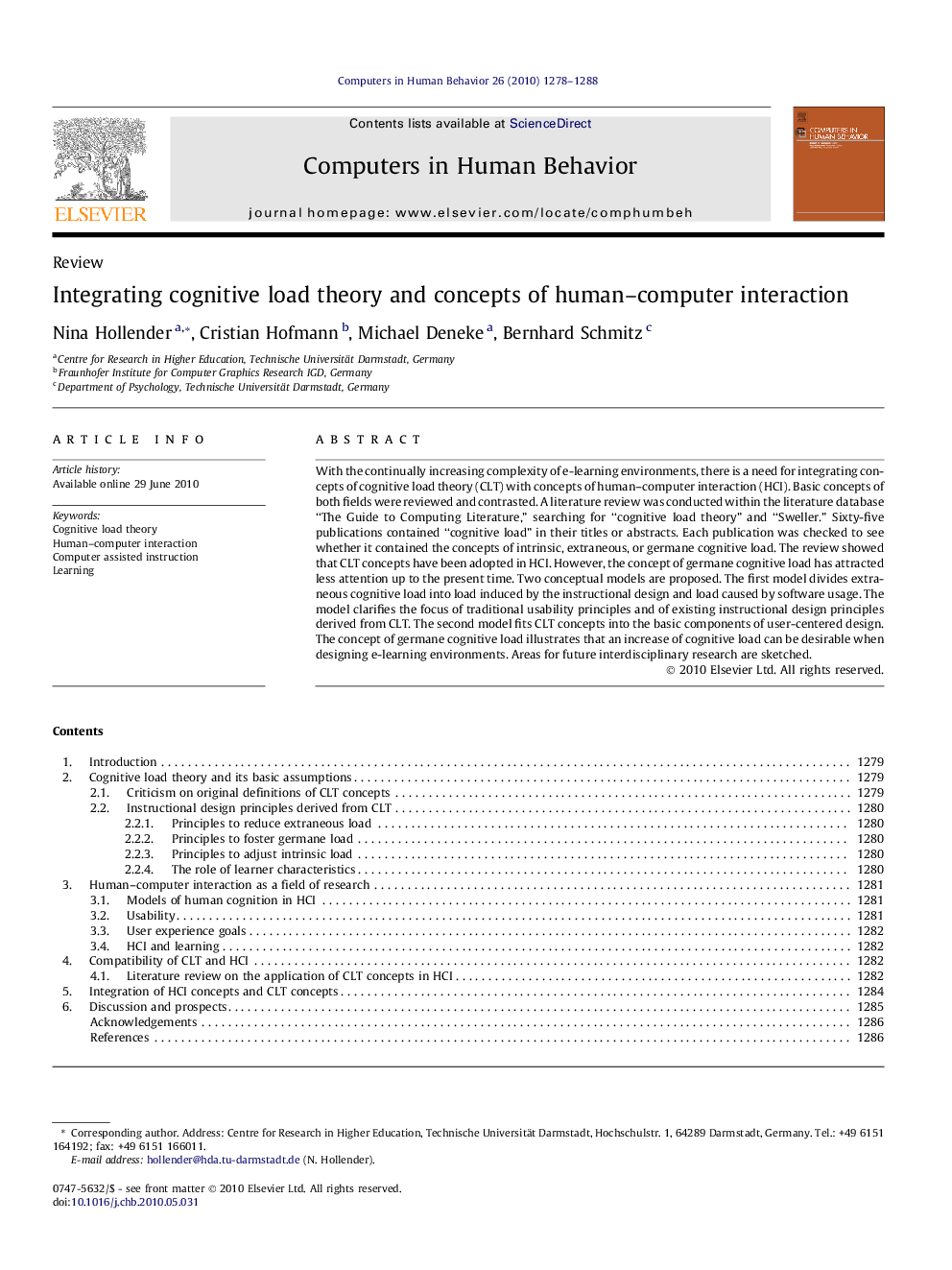| کد مقاله | کد نشریه | سال انتشار | مقاله انگلیسی | نسخه تمام متن |
|---|---|---|---|---|
| 351470 | 618471 | 2010 | 11 صفحه PDF | دانلود رایگان |

With the continually increasing complexity of e-learning environments, there is a need for integrating concepts of cognitive load theory (CLT) with concepts of human–computer interaction (HCI). Basic concepts of both fields were reviewed and contrasted. A literature review was conducted within the literature database “The Guide to Computing Literature,” searching for “cognitive load theory” and “Sweller.” Sixty-five publications contained “cognitive load” in their titles or abstracts. Each publication was checked to see whether it contained the concepts of intrinsic, extraneous, or germane cognitive load. The review showed that CLT concepts have been adopted in HCI. However, the concept of germane cognitive load has attracted less attention up to the present time. Two conceptual models are proposed. The first model divides extraneous cognitive load into load induced by the instructional design and load caused by software usage. The model clarifies the focus of traditional usability principles and of existing instructional design principles derived from CLT. The second model fits CLT concepts into the basic components of user-centered design. The concept of germane cognitive load illustrates that an increase of cognitive load can be desirable when designing e-learning environments. Areas for future interdisciplinary research are sketched.
Journal: Computers in Human Behavior - Volume 26, Issue 6, November 2010, Pages 1278–1288